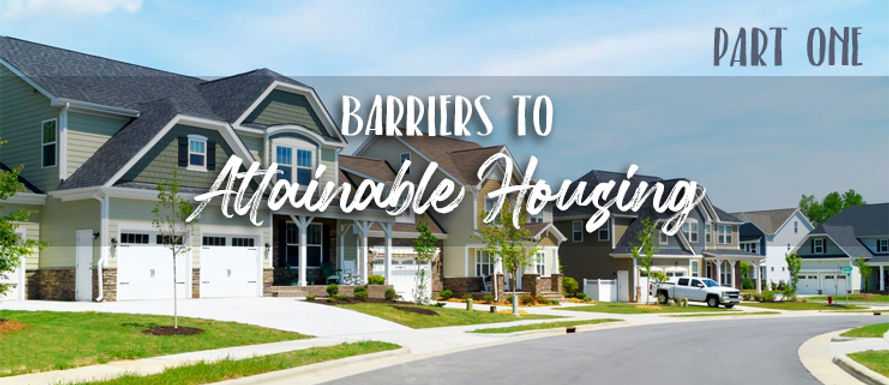
Until recently, homeownership has been an attainable American dream. It is the preferred housing choice for American families because it builds wealth for the owner, generates tax revenue for the local municipality, and contributes to the well-being of the community. Tax paying citizens care about what happens to their schools and parks and neighborhoods and roads. Yet the affordable, or more aptly put attainable, housing crisis continues to remain out of reach for too many people. In a two-part series, we’ll highlight some of the lesser-known barriers that prevent millions of Americans from obtaining homeownership.
Local citizens engaged as elected or appointed members of county commissions, city councils, and planning and zoning committees know what’s happening in their community, and they understand how growth can stress infrastructure. It’s costly to accommodate new homes and businesses that put greater demand on local roads, schools, and sewer and water infrastructure. To that end, planning initiatives are vital as they anticipate problems before they arise.
Most municipalities have instituted comprehensive plans to dictate future land use. A comprehensive plan provides a vision for the future of the community along with the steps that are needed to make that vision a reality. It is the basis for land use regulations and provides a nexus between the community’s future vision and the regulation of private property. While well intended, comprehensive plans are not living, breathing documents that pivot to the realities of an ever-changing landscape.
Like comprehensive plans, zoning ordinances have their positive attributes, but they also can act as a barrier to the supply of attainable housing. Many municipalities decide whether to rezone a property for residential use based on subjective criteria such as the square footage, architectural renderings, exterior finishes, and the projected average sales prices which is outside of what conventional zoning ordinances allow. Challenging such decisions is difficult and expensive so they largely go unchallenged.
Land use and zoning policies are increasingly hostile towards the development of single-family home neighborhoods. For example, garden home style developments make efficient use of the land with higher density thresholds and are attractive home options for first time home buyers, single parents, and the 55 plus community. Despite the need for garden homes, many municipal zoning ordinances have banned them.
These bans remove attainable, attractive home options from the marketplace. Not every home buyer wants, needs, or can afford a $500,000 home. Likewise, not every community can support a market where expensive homes are the only option. Yet, no community wants to allow starter homes anymore. If a buyer doesn’t have an entry level home to enter the housing market, then they are forced to the rental market. Studies show that homeowners take better care of their properties and take part in more community activities than renters, yet such restrictive zoning creates a larger rental market in these municipalities.
These types of broad-brush bans also have negative consequences that trickle down far beyond the communities’ housing market. For each house that is not built in a community there is one less customer supporting local businesses and one less taxpaying citizen. Municipalities want to attract business opportunities, such as retail and industry, but without rooftops, job producers will look elsewhere. This is why it is so important that low density and high-density single-family neighborhoods remain an option in every market.
Zoning challenges are not the only barriers to attainable housing. In our next article we will discuss how infrastructure improvement costs, stimulus money, and onerous regulations are also affecting the attainable housing market.

